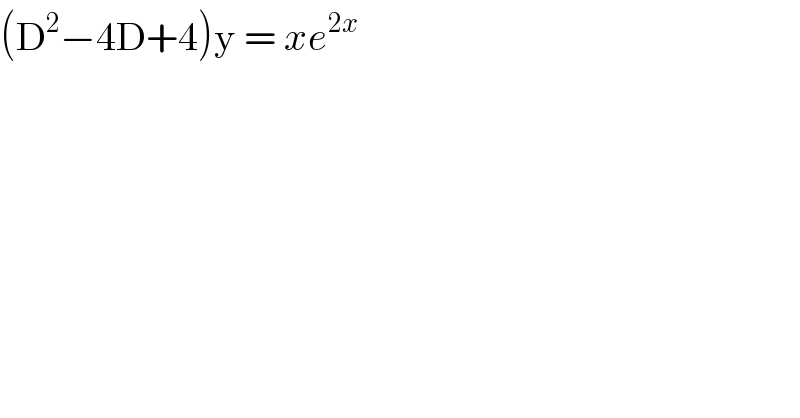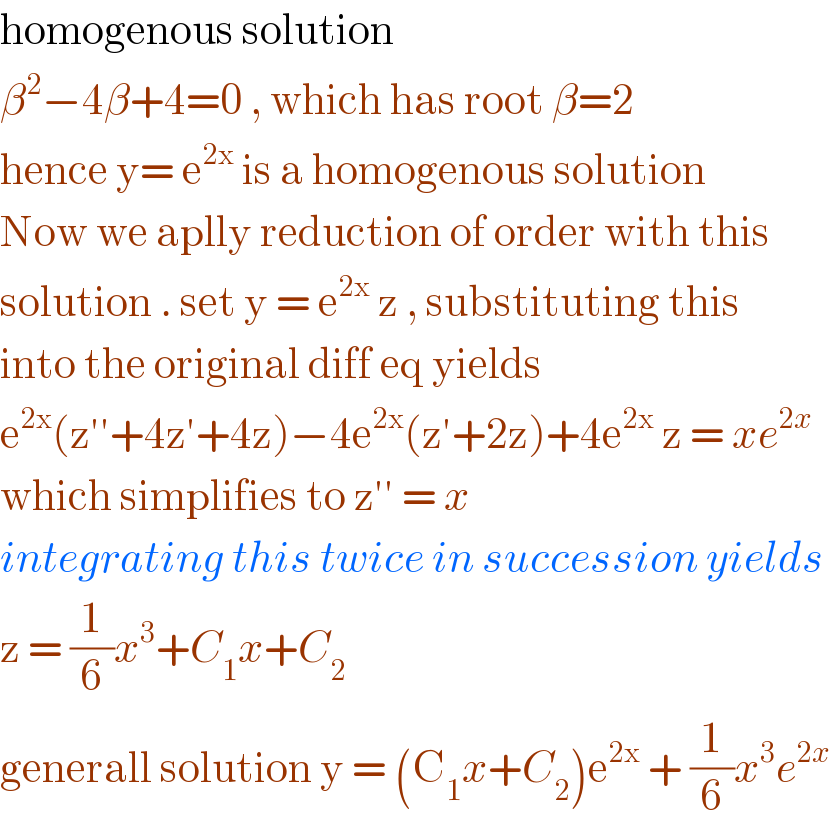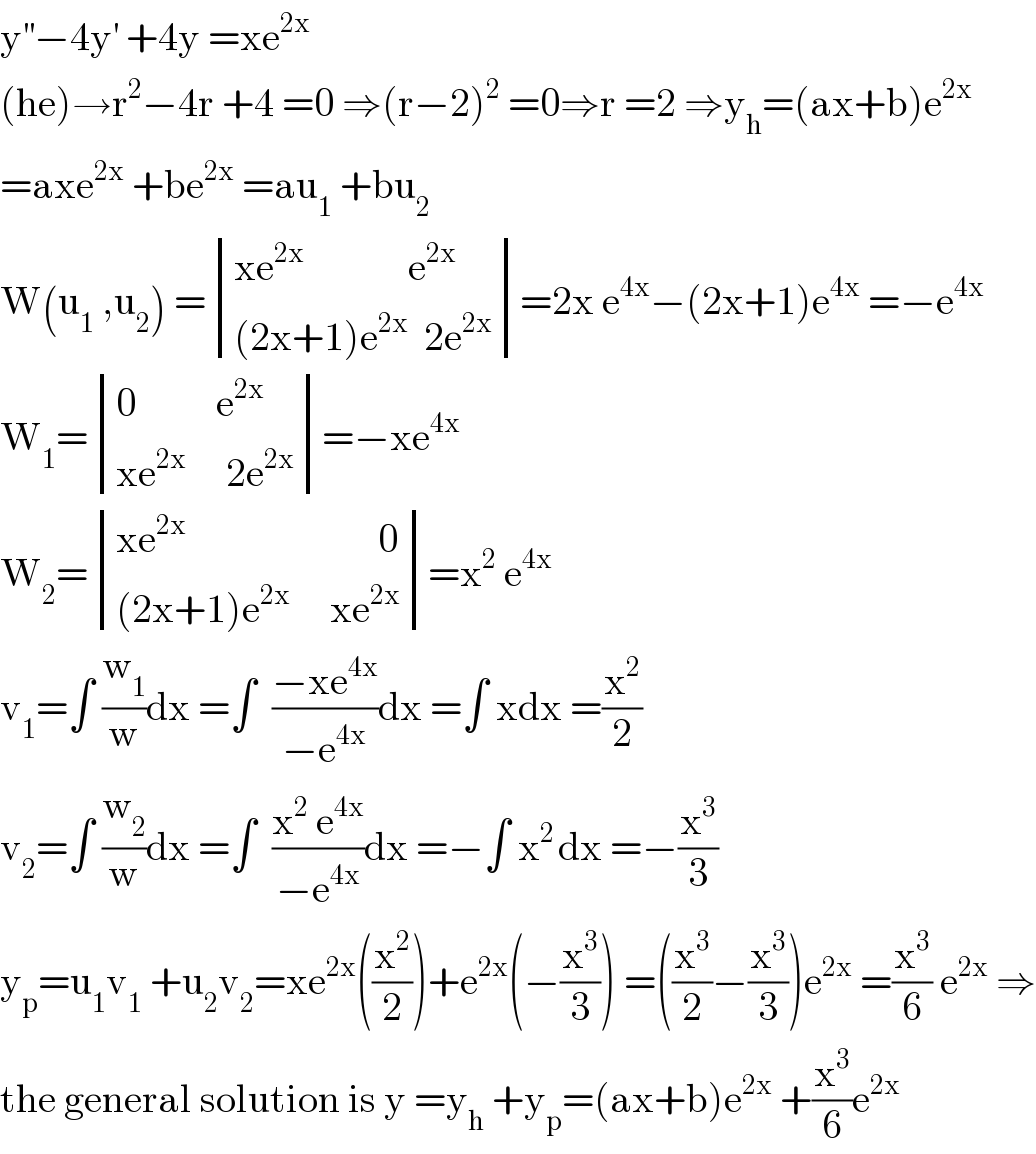
Question and Answers Forum
Previous in Differential Equation Next in Differential Equation
Question Number 99989 by bemath last updated on 24/Jun/20

Answered by bobhans last updated on 24/Jun/20

Commented by bemath last updated on 24/Jun/20

Answered by mathmax by abdo last updated on 24/Jun/20

